
Greetings Friends,
This month includes; Welcome Back Shorebird event, DHA erecting fences and no trespassing signs, rally at Parliament House, Darwin tree hollows and Lee Point Corridor.
1. Migratory shorebirds and Gouldian Finches
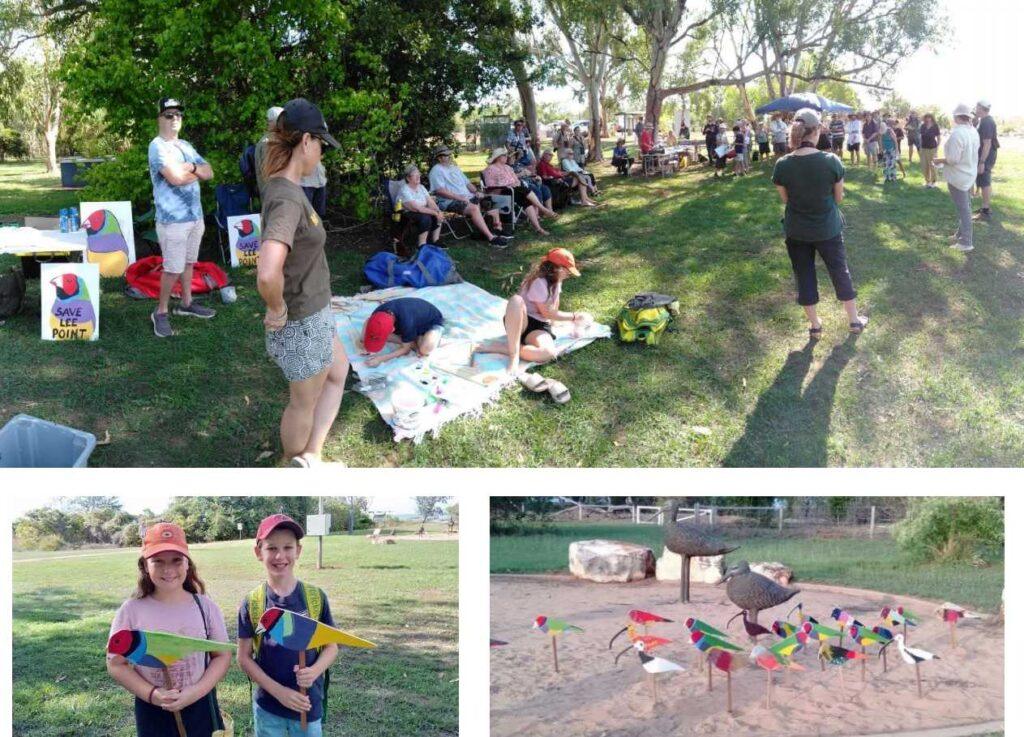
Welcome Back Shorebirds event – It was a fun afternoon viewing and painting shorebirds and Gouldians on 8 Oct. Birdlife TopEnd organised the event and FLP helped the young artists with their creations.
Most of the migratory shorebirds have now returned to Lee Point from places like Siberia (~10,000km away).
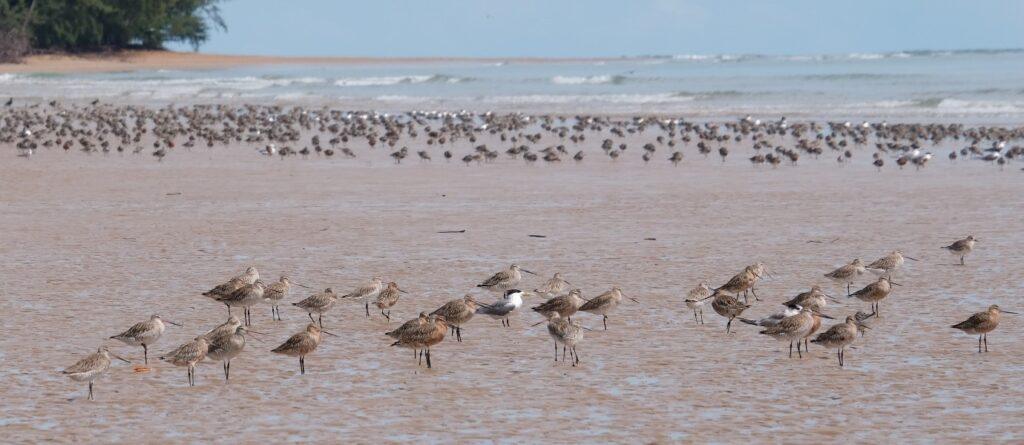
The migratory shorebirds in the foreground at Lee Point are Bar-tailed Godwits. A young Bar-tailed Godwit has just set a new world record for the longest non-stop flight, flying 13,560km from Alaska to Tasmania in 11 days. That’s better than most jet airliners.
Gouldian Finches have been moving around a lot more looking for food making them harder to find – sighting record summary. We expect to see more of them near Lee Point dam next May (like this year). Their breeding season runs from April to June. Hopefully the bulldozers will stay away!
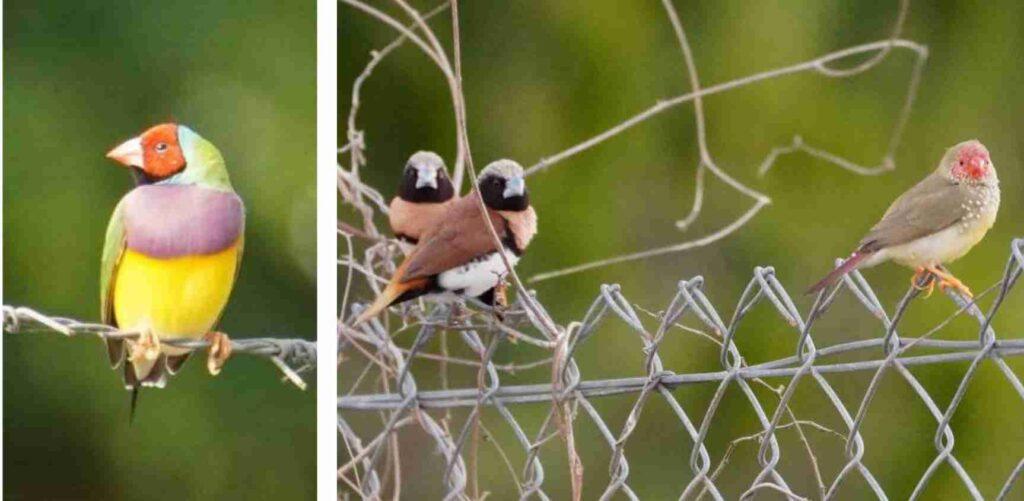
Finch photos by Samantha Duffy near Lee Point dam on the 27 Oct 2022.
2. Lee Point Trivia
Q1. This time of year, Green pygmy geese are regular visitors to Lee Point dam. Where do they nest? Answers at the end.
A. Open ground B. Wetlands C. Tree Hollows D. Tree branches
3. Australian and Territory Government
Australian Government – New fencing (south of Lee Point caravan park) and trespassing signs (involving fines up to $2200) were erected this month. DHA claimed the fence was because asbestos had been identified and the signs were to stop people dumping rubbish.
This has upset the community; many believe that DHA should clean up the asbestos (where identified) and concentrate on the illegal dumping of rubbish (which is no worse than previous years) rather than fining people for wanting to enjoy Lee Point.
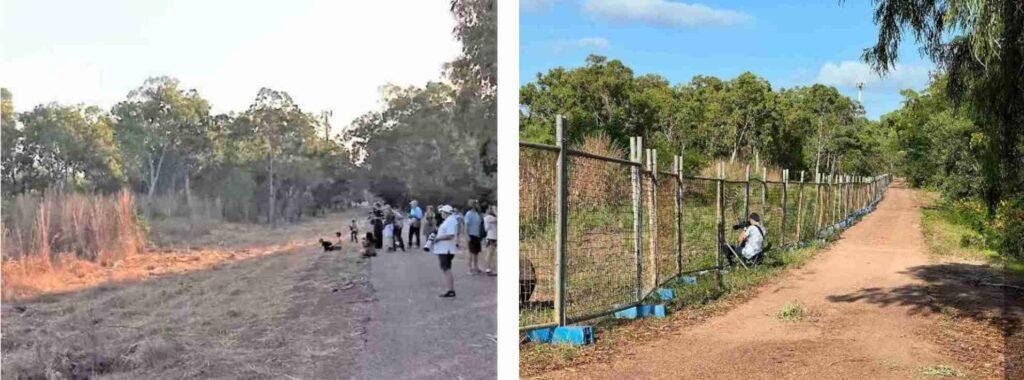
Birdwatching before and after installation of the fence.
Territory Government – The Save Lee Point petition with 4,476 signatures was tabled in the NT Parliament by Ms Kezia Purick MLA on 12 October. It has been forwarded to the Public Accounts Committee.
Many people attended the public rally at Parliament House on 13 Oct. Speakers included; Kirsty Howey (ECNT), David Percival (FLP), Ian Redmond (FLP) and Nick Kirlew (PLan).

4. Open woodland and tree hollows in Darwin
Open woodland (or savanna) is the most extensive habitat in the Topend. Its most common trees are the Darwin Stringybarks (Eucalytus miniata) and Darwin Woollybutts (Eucalyptus tetradonta) – both endemic to northern Australia. Generally, hollows do not start to occur in these trees if the diameter (at chest height) is under 250mm or less than 70 years old.

A young open woodland habitat south of Shoal Bay dump with few large diameter trees.
Gouldian Finches and certain wildlife depend on tree hollows for roosting and breeding.
Darwin’s disappearing tree hollows
In Darwin, open woodland occurs in the same area that is used for housing – typically 14m above mean sea level. Woodland areas (like housing) were substantially damaged by Cyclone Tracy in 1974, however, the level of damage varied depending on location.
Today there are limited old trees/hollow areas left. By 2050 (76 years post Cyclone Tracy), there will be even less hollows. Tree hollow areas in Holmes Jungle Reserve and Charles Darwin NP are expected to survive and tree hollow areas near Leanyer sewerage ponds and Shoal Bay dump may survive because they are in buffer zones.
The map below shows tree hollow areas in 2050. It assumes no further clearing of the Lee Point corridor and development 14m above mean sea level. The black dots indicate size of the remaining open woodland tree hollow areas – areas under one hectare not shown.
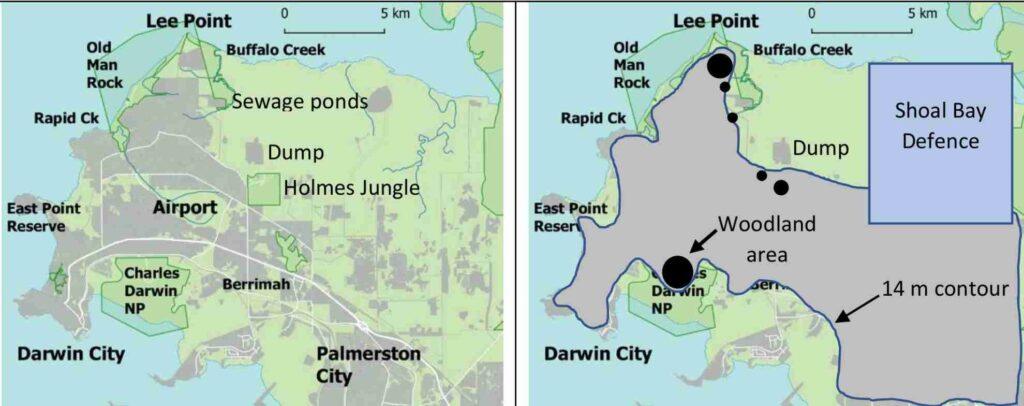
2020 Map (left) and 2050 Map (right). Green is undisturbed area and grey is developed area. By 2050, Charles Darwin NP will be an isolated woodland. Woodlands in the north of Darwin will hopefully remain connected.
5. Lee Point Corridor
FLP believe that the majority of the disused Lee Point Golf Course land should be included into Casuarina Coastal Reserve to help protect nearby migratory shorebird sites.
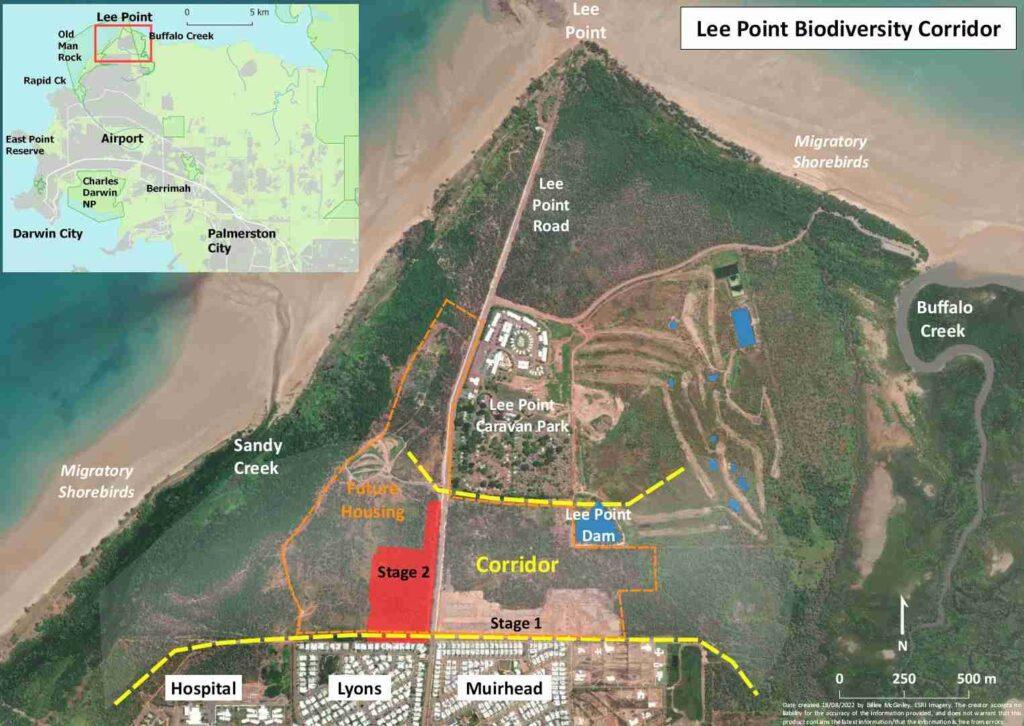
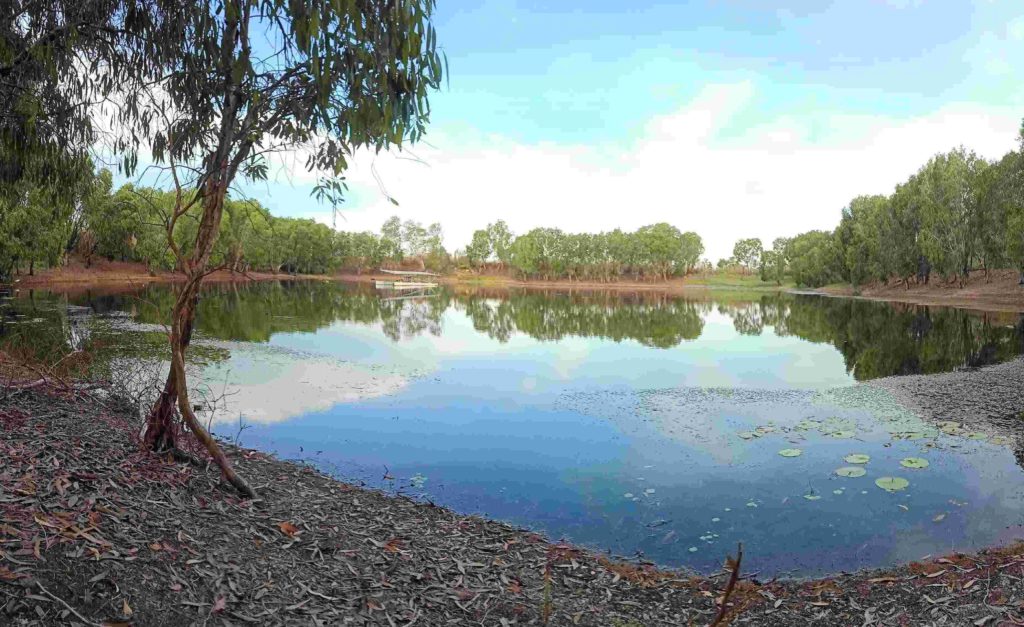
The Lee Point dam is one of the largest dams in the area and part of the Corridor. The Corridor needs protecting. To help please sign; Save the Gouldians petition and find out – What to do next
Nests in the corridor are common this time of year.
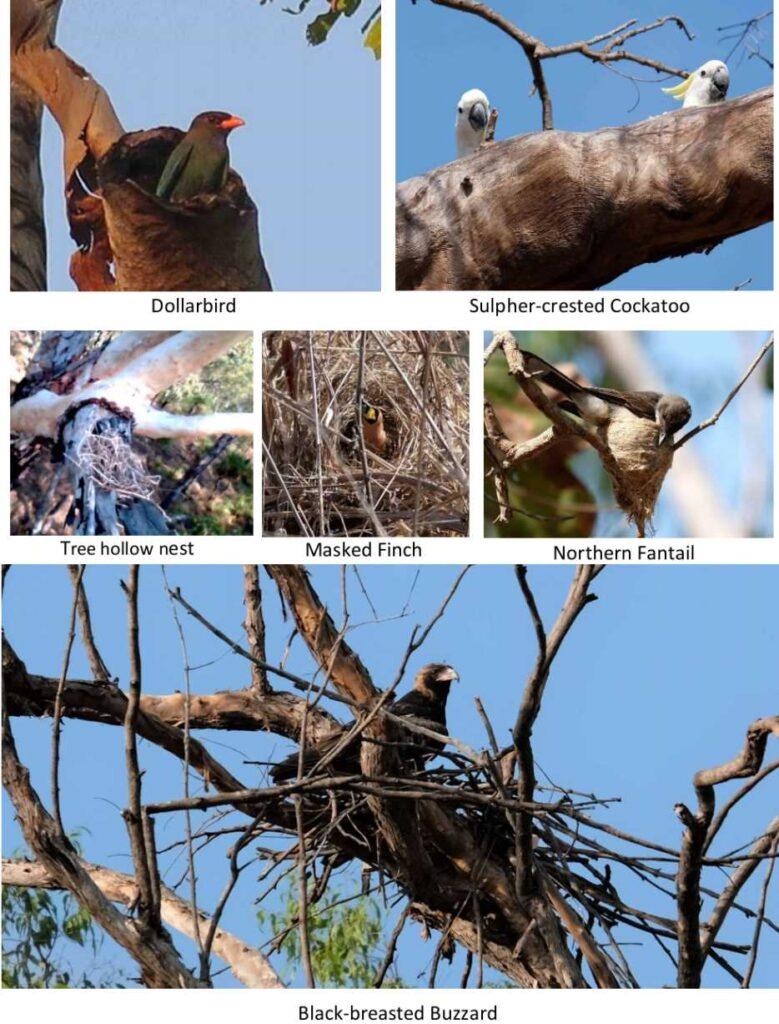
Dollarbirds and Cockatoos use tree hollows to nest in. The tree hollow nest (middle left) in a Darwin Woollybutt is probably a disused finch nest.
Masked Finches (centre) build communal nests in trees to roost but lay their eggs in nests near the ground. The prize for the neatest nest goes to the Northern Fantail.
Ducks and geese have been visiting the Lee Point dam
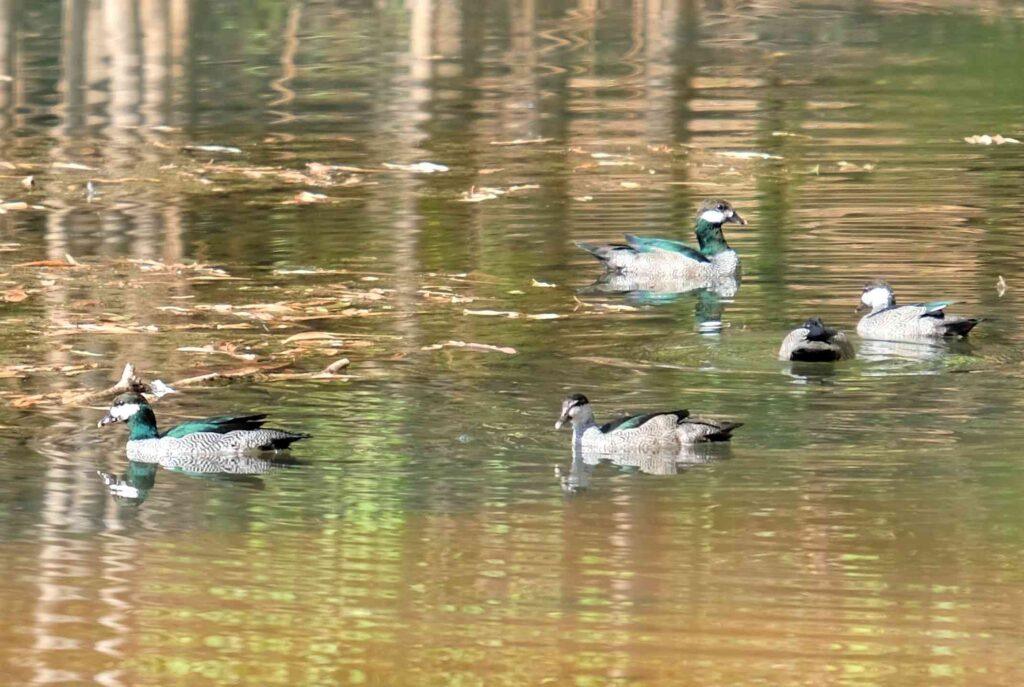
Green pygmy geese on Lee Point dam late Oct 2022.
As the water level in the dam drops certain wildlife such as pygmy geese (above) come in to eat the aquatic vegetation.
Until next time, enjoy the storms of the build up at Lee Point
Answer Q1 – C. Tree hollows.
Pygmy geese are considered to be small “perching ducks” and are the world’s smallest waterfowl (includes geese, ducks, swans). They look like a duck but are mainly vegetarian (like geese). Ducks eat a variety of food ie. grasses, aquatic plants, fish, insects, small amphibians, worms and small molluscs.
Green pygmy geese breed in the Top End wet season.